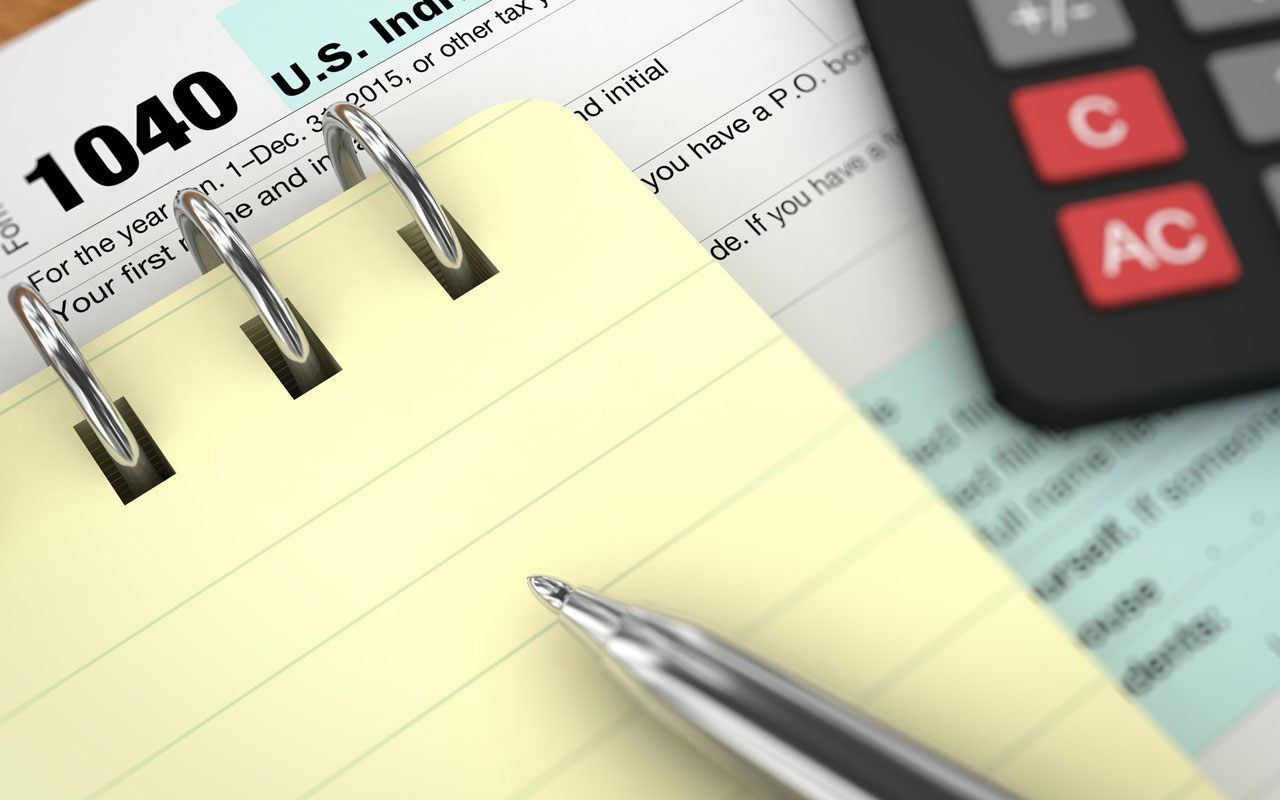New Tax Law: Tips for Filing Your 2017 Tax Return
All the hoopla about the tax law signed by President Trump can obscure a sneaky little secret: The rules pertaining to the 2017 tax return you're working on now are almost exactly the same as they were before Congress gave us the biggest tax overhaul in more than 30 years.


All the hoopla about the tax law signed by President Trump can obscure a sneaky little secret: The rules pertaining to the 2017 tax return you're working on now are almost exactly the same as they were before Congress gave us the biggest tax overhaul in more than 30 years. Although 41% of respondents to a recent poll thought otherwise, almost all of the changes, including reduced tax rates, will apply for the first time to the return you file next spring.
On the bright side, that means the 2016 tax forms you filed last year can be a great guide for this year's journey. Study them carefully. Yes, the new tax law will allow 30 million or more taxpayers who have regularly itemized deductions to switch to the standard deduction next year. But, if you itemized in the past, you'll probably do so on your 2017 tax return, too.

Savor SALT Deductions One Last Time
One of the most valuable deductions for itemizers is the write-off for state and local taxes (SALT). And, one of the most controversial changes for 2018 is the $10,000 annual cap on SALT deductions. (The same dollar limit applies to both single and joint returns.) But, for your 2017 return, there is no limit. You can deduct all the state and local income tax you paid or, if it gives you a bigger break, your state and local sales taxes. You can also write off all the local property taxes you paid on any number of homes you own.
Congress specifically banned taxpayers from making an end run around the crackdown by prepaying 2018 state income taxes ahead of the January 1 change in the rules. But the lawmakers were silent about prepaying property taxes, sparking a rush in many high-tax jurisdictions to do just that. What if you are among the rush of homeowners who wrote checks in hopes of beating the deadline?
Maybe you win. Maybe you lose. The IRS announced in late December that such prepayments would be deductible on 2017 returns only if the 2018 taxes had been assessed. Taxpayers couldn't just estimate what they'd owe and write a check to the county treasury. Because jurisdictions handle assessments and billings differently, there's no one-size-fits-all answer to whether prepaid property taxes are deductible. If you prepaid, check with local authorities.
The seemingly savvy move of prepaying taxes to grab the deduction could backfire for some taxpayers if the extra write-off triggers the alternative minimum tax. The AMT bans the deduction of state and local taxes. And, note this: Although the new law specifically prohibits prepaying state income tax, that doesn't affect your right to deduct a fourth-quarter estimated state tax payment due in January. If you paid such a bill by December 31, write it off on your 2017 return.

A Break on Deducting Medical Expenses
At one point last fall, the House of Representatives voted to abolish the deduction for medical expenses. In the end, though, the new law actually sweetens this break, and does so retroactively. For 2017 and 2018, you can write off medical expenses to the extent they exceed 7.5% of your adjusted gross income. But note, the previous 10% threshold returns in 2019.
The cost of medical insurance, including Medicare premiums, counts toward this itemized deduction. If you're self-employed, as a consultant in your semi-retirement, for example, you may have a shot at an even better deal. As long as you are not eligible for medical coverage through a job–either your own or a spouse's–you can deduct the cost of medical insurance on the face of the Form 1040 even if you don't itemize. If you qualify, the full cost is deductible, with no 7.5%-of-AGI reduction.
Whether as an itemized deduction subject to the threshold or a self-employed write-off that's not, qualifying medical costs include part of what you paid for long-term-care insurance. The limits for deducting those premiums in 2017 are age 40 or younger, $410; age 41 to 50, $770; age 51 to 60, $1,530; age 61 to 70, $4,090; and age 71 and older, $5,110.

No Changes for Alimony
You may have heard that the new law scraps the deduction for alimony paid to a former spouse. That's true, but only for divorce decrees signed after the end of 2018. If you paid alimony in 2017, it's still deductible whether you itemize or not. And, the old rule that requires recipients to report alimony as taxable income is still on the books, too. Don't try to get a head start on this change by failing to report alimony on your 2017 return. Your ex still has to report your Social Security number on his or her Form 1040 so the IRS knows to look for a corresponding income amount on your return.

Step-Up Basis Survives
When Congress talks about abolishing the federal estate tax–and there was a lot of talk about that in 2017–a lot of people worry about what that would mean for a tax break tightly tied to death: the step-up in basis for inherited assets. Although the federal estate tax applies to the estates of only a tiny percentage of those who die each year, the step-up rule helps out everyone who inherits stocks, bonds, mutual funds, real estate or other assets.
Rather than abolish the estate tax, the new law basically doubles the estate-tax exemption, so even fewer estates will have to pay it. For those who die in 2018, just over $11 million can be passed to heirs tax-free ($22 million for couples). And, the lawmakers left the step-up rule unchanged.
Looking back to 2017, if you sold assets you had inherited, remember that the basis for figuring your gain or loss is the asset's value at the time your benefactor died. The tax on any appreciation up to that time is forgiven. Congress estimates that this break will save taxpayers about $35.6 billion this year. It's nice to know it will be around in the future, too.

Do-Over for Roth IRA Conversions
The new tax law eliminates the safety net that used to let folks who converted traditional IRAs to Roth accounts change their mind. When you convert, you must pay tax on funds shifted to a Roth. (That's the price you pay so that Roth payouts will be tax-free.) But, if the account lost money, say, or you fell into a lower tax bracket, you had until October 15 of the following year to "recharacterize" the account by moving the money back to a traditional IRA. Doing so erased the tax bill on the conversion. You could then reconvert the funds later at a lower tax cost. Going forward, though, Roth conversions are irreversible. Although it was unclear at first, the IRS says folks who converted accounts in 2017 have one last chance to recharacterize.
If a do-over would be a profitable move, you have until October 15 to reverse the conversion. If you recharacterize before you file your 2017 return, you avoid the need to pay tax on the converted amount and retrieve it later with an amended return.

Report Gains Even If Taxed at 0%
If your long-term capital gains and qualified dividends are taxed at 0%, don't assume that means you don't have to report them to the IRS. For 2017, that glorious rate applies to qualifying investment income of taxpayers who find themselves in the 10% or 15% tax bracket, with taxable income up to $37,950 on single returns and $75,900 on joint returns. But you have to report the income on your tax return and it's included in the taxable income figure that determines if you qualify for this break. Report gains and dividends on the face of the Form 1040 and use the Schedule D worksheet to apply the 0% rate.

2017 Tax Brackets
A key part of the new tax law is wider tax brackets and lower tax rates. However, they don't apply to the 2017 tax return you're working on now. These seven tax brackets do. Here are the income ranges for 2017 tax brackets for individuals and joint filers:
- 10% Tax Rate: Individual, $0 to $9,325; joint, $0 to $18,650.
- 15% Tax Rate: Individual, $9,326 to $37,950; joint, $18,651 to $75,900.
- 25% Tax Rate: Individual, $37,951 to $91,900; joint, $75,901 to $153,100.
- 28% Tax Rate: Individual, $91,901 to the $191,650; joint, $153,101 to $233,350.
- 33% Tax Rate: Individual, $191,651 to $416,700; joint, $233,351 to $416,700.
- 35% Tax Rate: Individual, $416,701 to $418,400; joint, $416,701 to $470,700.
- 39.6% Tax Rate: Individual, over $418,400; joint, over $470,700.
Get Kiplinger Today newsletter — free
Profit and prosper with the best of Kiplinger's advice on investing, taxes, retirement, personal finance and much more. Delivered daily. Enter your email in the box and click Sign Me Up.

-
 The AI Doctor Coming to Read Your Test Results
The AI Doctor Coming to Read Your Test ResultsThe Kiplinger Letter There’s big opportunity for AI tools that analyze CAT scans, MRIs and other medical images. But there are also big challenges that human clinicians and tech companies will have to overcome.
By John Miley Published
-
 The Best Places for LGBTQ People to Retire Abroad
The Best Places for LGBTQ People to Retire AbroadLGBTQ people can safely retire abroad, but they must know a country’s laws and level of support — going beyond the usual retirement considerations.
By Drew Limsky Published
-
 What to Do With Your Tax Refund: 6 Ways to Bring Growth
What to Do With Your Tax Refund: 6 Ways to Bring GrowthUse your 2024 tax refund to boost short-term or long-term financial goals by putting it in one of these six places.
By Rachael Green Published
-
 What Does Medicare Not Cover? Eight Things You Should Know
What Does Medicare Not Cover? Eight Things You Should KnowHealthy Living on a Budget Medicare Part A and Part B leave gaps in your healthcare coverage. But Medicare Advantage has problems, too.
By Donna LeValley Published
-
 12 Great Places to Retire in the Midwest
12 Great Places to Retire in the MidwestPlaces to live Here are our retirement picks in the 12 midwestern states.
By Stacy Rapacon Published
-
 10 Cheapest Small Towns to Live In
10 Cheapest Small Towns to Live InThe cheapest small towns might not be for everyone, but their charms can make them the best places to live for plenty of folks.
By Dan Burrows Published
-
 15 Reasons You'll Regret an RV in Retirement
15 Reasons You'll Regret an RV in RetirementMaking Your Money Last Here's why you might regret an RV in retirement. RV-savvy retirees talk about the downsides of spending retirement in a motorhome, travel trailer, fifth wheel or other recreational vehicle.
By Bob Niedt Published
-
 The Cheapest Places To Retire in the US
The Cheapest Places To Retire in the USWhen you're trying to balance a fixed income with an enjoyable retirement, cost of living is a crucial factor to consider.
By Stacy Rapacon Published
-
 The Six Best Places to Retire in New England
The Six Best Places to Retire in New Englandplaces to live Thinking about a move to New England for retirement? Here are the best places to land for quality of life, affordability and other criteria.
By Stacy Rapacon Last updated
-
 13 Smart Estate Planning Moves
13 Smart Estate Planning Movesretirement Follow this estate planning checklist for you (and your heirs) to hold on to more of your hard-earned money.
By Janet Kidd Stewart Last updated
